AMD Ryzen 7 vs. Intel Core i7: Which Is Better?
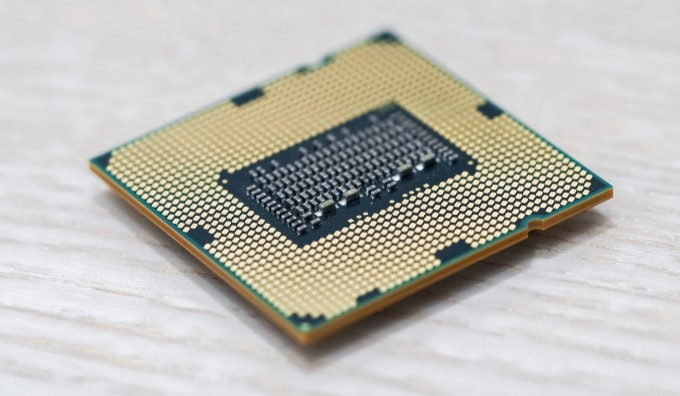
In the world of computing, the central processing unit (CPU) serves as the brain of your system, orchestrating complex tasks and calculations. Two titans of the industry, AMD and Intel, have long been locked in a fierce battle for supremacy in the CPU market.
Their mid to high-end offerings, the AMD Ryzen 7 and Intel Core i7, represent the pinnacle of performance for mainstream users. These processors boast cutting-edge technologies and architectural improvements that push the boundaries of what’s possible in terms of speed, efficiency, and multitasking capabilities.
Performance Comparison
When evaluating processors, performance is a critical factor to consider. The AMD Ryzen 7 and Intel Core i7 families offer impressive performance across various workloads, but each excels in different areas.
Single-Thread Performance
Single-thread performance refers to a processor’s ability to handle tasks that rely on a single CPU core. This is particularly important for applications that do not take full advantage of multi-core architectures.
In this regard, Intel Core i7 processors have traditionally held an advantage, thanks to their higher clock speeds and advanced boost technologies. However, recent generations of AMD Ryzen 7 CPUs have closed the gap, offering competitive single-thread performance that rivals their Intel counterparts.
Multi-Core Prowess
In the era of multi-threaded applications and demanding workloads, multi-core performance has become increasingly crucial. AMD Ryzen 7 processors have consistently demonstrated exceptional multi-core capabilities, thanks to their higher core and thread counts.
With up to 16 cores and 32 threads in some models, Ryzen 7 CPUs can handle heavily parallelized tasks with ease. Intel Core i7 processors, while still offering strong multi-core performance, typically feature lower core and thread counts, making them slightly less adept at handling highly multi-threaded workloads.
Gaming Performance
For gaming enthusiasts, the choice between AMD Ryzen 7 and Intel Core i7 can be a tough one. Both processor families deliver excellent gaming performance, capable of running modern titles at high frame rates and settings.
Intel Core i7 CPUs have historically been favored for their strong single-core performance, which can benefit gaming scenarios that rely heavily on individual core speed.
However, AMD Ryzen 7 processors have made significant strides in gaming performance, offering comparable or even better results in many cases, especially when paired with high-speed memory and powerful graphics cards.
Productivity Workload Efficiency
Productivity workloads encompass a wide range of tasks, from content creation and video editing to 3D rendering and scientific simulations. In these scenarios, the AMD Ryzen 7 family shines, leveraging its high core and thread counts to power through demanding applications.
The Ryzen 7 processors’ multi-core architecture allows for efficient multitasking and faster completion of resource-intensive tasks.
Intel Core i7 CPUs also perform well in productivity workloads, but their lower core counts may result in slightly longer rendering times or reduced multitasking capabilities compared to their Ryzen counterparts.
Technical Specifications
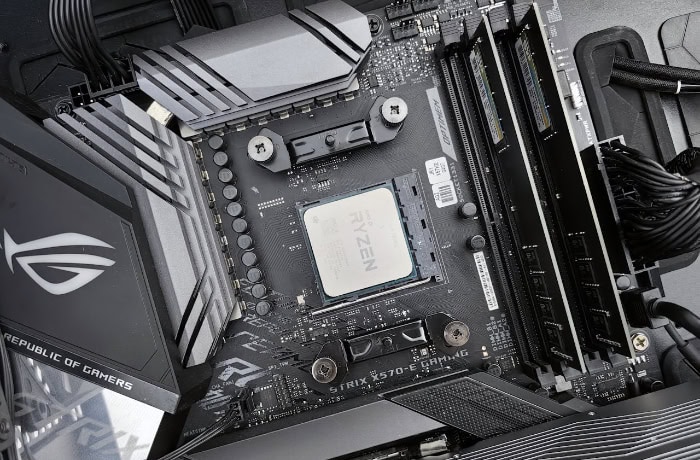
To fully grasp the capabilities of AMD Ryzen 7 and Intel Core i7 processors, it is essential to examine their technical specifications. These specifications provide valuable insights into the processors’ architecture, performance potential, and efficiency.
Cores and Threads
In modern processors, core and thread counts play a crucial role in determining performance, especially in applications that can take advantage of parallel processing.
A core is an individual processing unit within a CPU, while a thread is a virtual version of a core that allows for more efficient utilization of the CPU’s resources.
Generally, higher core and thread counts enable a processor to handle more tasks simultaneously, which can lead to better performance in multi-threaded applications such as video editing, 3D rendering, and scientific simulations.
However, it’s important to note that core and thread counts alone do not determine overall performance, as other factors like clock speeds, architecture, and cache design also play significant roles.
When comparing processors, it’s essential to consider the specific core and thread configurations of each model, along with other performance-related specifications, to make an informed decision based on your individual needs and workload requirements.
Clock Speeds and Boost Technologies
Clock speeds and boost technologies play a crucial role in determining a processor’s performance. Intel Core i7 CPUs have traditionally boasted higher base clock speeds and more aggressive boost clocks, allowing them to achieve higher single-core performance.
Intel’s Turbo Boost technology dynamically increases the clock speed of individual cores when needed, providing a burst of performance for demanding tasks. On the other hand, AMD Ryzen 7 processors feature lower base clocks but make up for it with their Precision Boost technology.
Precision Boost intelligently raises the clock speeds of the cores based on the workload and thermal headroom, ensuring optimal performance without sacrificing efficiency.
Cache Hierarchy and Architecture
Cache memory is a fast, on-chip memory that stores frequently accessed data, reducing the need for the CPU to access the slower main memory. AMD Ryzen 7 and Intel Core i7 processors employ different cache architectures and sizes.
Ryzen 7 CPUs feature a large L3 cache, which is shared among all cores, providing quick access to data for multi-threaded workloads.
Intel Core i7 processors, on the other hand, have a smaller L3 cache but compensate with larger L1 and L2 caches, which can benefit single-threaded performance.
The cache architecture and sizes of these processors are optimized for their respective strengths and target workloads.
Fabrication Process and Transistor Density
The manufacturing process and transistor density are critical factors that influence a processor’s performance, power efficiency, and cost. AMD Ryzen 7 processors are built on TSMC’s advanced 7nm and 5nm process nodes, allowing for higher transistor density and improved power efficiency.
Intel Core i7 CPUs have traditionally been manufactured on Intel’s own 14nm and 10nm process nodes, but recent generations have seen a shift to the more advanced 10nm and 7nm nodes. The smaller process nodes enable higher transistor counts, lower power consumption, and potentially better performance per watt.
Value Proposition
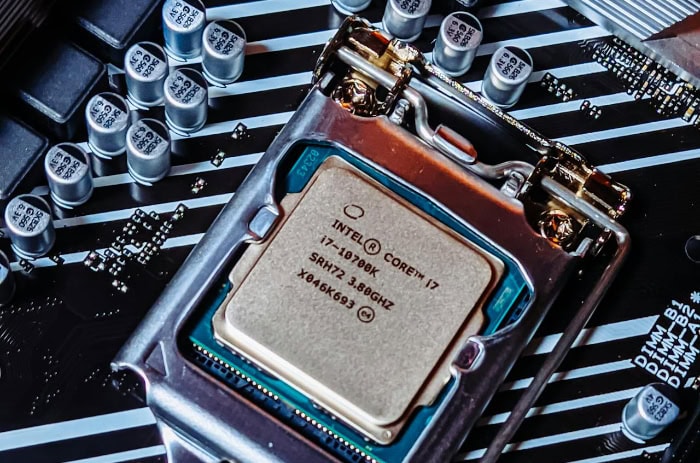
When considering a processor, it’s crucial to evaluate the value it offers beyond its raw performance. The value proposition of a CPU encompasses factors such as price-to-performance ratio, platform costs, and long-term relevance.
Price-to-Performance Ratio
One of the most important aspects of a processor’s value is its price-to-performance ratio. This metric determines how much performance you get for every dollar spent.
AMD Ryzen 7 processors have gained a reputation for offering excellent value, often delivering comparable or even better performance than their Intel counterparts at a lower price point.
This has made Ryzen 7 CPUs an attractive option for budget-conscious buyers who want to maximize their computing power without breaking the bank.
Intel Core i7 processors, while still providing strong performance, tend to come with a higher price tag, which can impact their overall value proposition.
Motherboards and Cooling
When building a PC, the processor is just one part of the equation. The cost of the accompanying components, such as the motherboard and cooling solution, can significantly impact the overall value of a system.
AMD Ryzen 7 processors benefit from a wide range of compatible motherboards across various price points, giving users more flexibility in their build choices.
Additionally, Ryzen 7 CPUs generally have lower power consumption and thermal output compared to their Intel counterparts, which can result in cost savings on cooling solutions.
Intel Core i7 processors, on the other hand, often require higher-end motherboards and more robust cooling to achieve optimal performance, which can drive up the total platform cost.
Future-Proofing
When considering long-term relevance and upgrade potential, it’s important to note that Ryzen 7 processors span multiple generations and socket types. Older Ryzen 7 models (up to the 5000 series) use the AM4 socket, which AMD supported for several years, offering users extended upgrade paths.
More recent Ryzen 7 processors, starting with the 7000 series, use the newer AM5 socket. AMD has committed to supporting the AM5 platform through 2025 and beyond, potentially offering users of newer Ryzen 7 CPUs a clear upgrade path for the coming years.
In contrast to AMD’s approach, Intel has historically changed socket designs more frequently for their Core i7 and other processor lines. This has often meant that users looking to upgrade their Intel-based systems to a newer generation of processors may need to replace their motherboards as well, as the new CPUs may not be compatible with the older socket.
As a result, users with Intel-based systems may find themselves needing to invest in a new motherboard more often when upgrading their processors, which can increase the overall cost of keeping their systems up-to-date.
Compatibility and Ecosystem
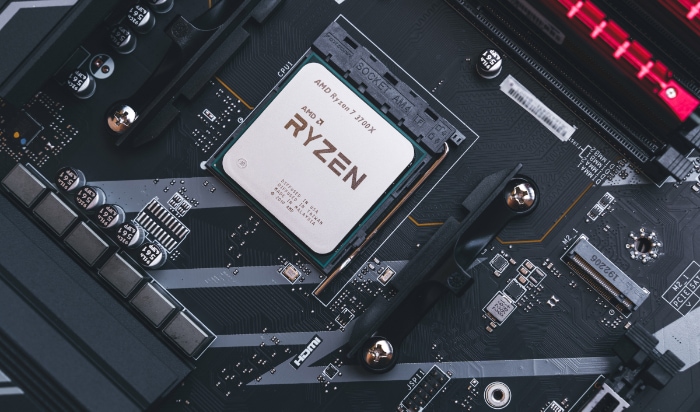
The compatibility and ecosystem surrounding a processor play a crucial role in determining its overall value and usability. AMD Ryzen 7 and Intel Core i7 processors each have their own unique ecosystems, which include motherboard chipsets, socket types, memory support, and connectivity options.
These factors can significantly impact system performance, upgradability, and the overall user experience.
Motherboard Chipsets and Sockets
The motherboard serves as the foundation of any computer system, and its compatibility with a processor is determined by the chipset and socket type. AMD Ryzen 7 processors use the AM4 socket, which has been a mainstay of the Ryzen platform since its introduction.
This socket compatibility across multiple generations of Ryzen processors has allowed for easier upgrades and longer-term support. AMD offers a range of chipsets, including B450, X470, B550, and X570, each catering to different user needs and budgets.
Intel Core i7 processors, on the other hand, have seen more frequent changes in socket designs. Recent generations of Core i7 CPUs use the LGA 1200 socket, while the latest 12th generation processors have moved to the LGA 1700 socket.
This change in socket design can limit upgrade options for users with older motherboards. Intel’s chipset lineup includes H410, B460, H470, and Z490 for 10th and 11th gen processors, while the 12th gen CPUs are compatible with H610, B660, H670, and Z690 chipsets.
RAM Support and Speeds
Memory support and speeds can significantly impact system performance, especially in tasks that require high bandwidth or low latency. AMD Ryzen 7 processors have gained a reputation for their strong memory support, with many models capable of running high-speed DDR4 memory without issues.
Ryzen 7 CPUs benefit from faster memory speeds, which can improve the performance of the processor’s Infinity Fabric interconnect.
Intel Core i7 processors also support a wide range of memory speeds, but the specific support can vary depending on the generation and model of the CPU.
Generally, Intel processors are less sensitive to memory speeds compared to their AMD counterparts, but faster memory can still provide performance benefits in certain scenarios.
Both AMD and Intel platforms support dual-channel memory configurations, which can significantly boost memory bandwidth compared to single-channel setups. It’s worth noting that some high-end motherboards for both platforms also support quad-channel memory configurations, offering even higher bandwidth for demanding applications.
PCIe Lanes and I/O Options
PCIe lanes are a crucial connectivity feature directly influenced by the processor, used to connect high-bandwidth devices such as graphics cards, NVMe SSDs, and other expansion cards directly to the CPU.
AMD Ryzen 7 processors, such as the Ryzen 7 5800X, offer 20 PCIe 4.0 lanes directly from the CPU. Typically, 16 lanes are dedicated to graphics and 4 lanes are available for high-speed storage devices like NVMe SSDs.
Intel Core i7 processors, like the 11th Generation Intel Core i7-11700K, also offer 20 PCIe 4.0 lanes directly from the CPU, with a similar allocation of 16 lanes for graphics and 4 lanes for storage or other devices.
Recent generations of both AMD Ryzen 7 and Intel Core i7 processors have introduced support for newer PCIe standards. AMD Ryzen 7 processors from the 3000 series onwards support PCIe 4.0, with the latest 7000 series introducing PCIe 5.0 support.
For Intel Core i7, PCIe 4.0 support began with the 11th generation, while PCIe 5.0 was introduced with the 12th generation processors.
When considering PCIe lanes, it’s important to assess your specific needs based on the devices you plan to connect to your system.
The PCIe lanes provided by both AMD Ryzen 7 and Intel Core i7 processors should be sufficient for most users’ needs, but it’s always advisable to check the specifications of the specific processor model you’re considering to ensure compatibility with your intended use case.
Real-world Usage Scenarios
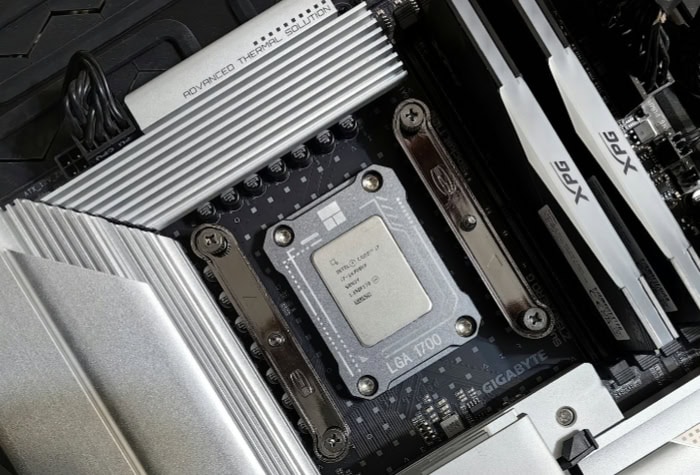
When choosing between AMD Ryzen 7 and Intel Core i7 processors, it’s essential to consider how they perform in real-world usage scenarios. Different applications and workloads can benefit from the unique strengths of each processor family.
Content Creation Performance
Content creation tasks, such as video editing, 3D rendering, and photo manipulation, require powerful processors that can handle complex calculations and multi-threaded workloads. AMD Ryzen 7 processors excel in this area, thanks to their high core and thread counts.
The additional cores and threads allow for faster rendering times and smoother performance when working with high-resolution assets and applying complex effects.
Intel Core i7 processors also perform well in content creation tasks, particularly in applications that rely more on single-core performance.
However, in heavily multi-threaded scenarios, the higher core and thread counts of Ryzen 7 CPUs often give them an edge, resulting in faster export times and improved overall performance.
Streaming and Multitasking
Streaming has become increasingly popular, with many users broadcasting their gameplay or creative processes to online audiences.
Simultaneously, multitasking has become a necessity for many professionals and power users who need to run multiple applications and tasks concurrently.
Both AMD Ryzen 7 and Intel Core i7 processors offer strong performance in streaming and multitasking scenarios.
The high core and thread counts of Ryzen 7 CPUs allow for efficient handling of multiple tasks, such as gaming, streaming, and running background applications, without significant performance drops.
Intel Core i7 processors, with their strong single-core performance and high clock speeds, also provide a smooth experience when streaming and multitasking.
The Intel Quick Sync Video technology, integrated into Core i7 CPUs, can help with video encoding tasks, reducing the load on the processor during streaming.
Virtualization and Server-Like Workloads
Virtualization allows users to run multiple operating systems or virtual machines on a single computer, while server-like workloads involve tasks such as hosting websites, running databases, or managing network services.
AMD Ryzen 7 processors, particularly those with higher core and thread counts, offer excellent performance in virtualization and server-like workloads.
The additional cores and threads allow for efficient handling of multiple virtual machines or containers, making Ryzen 7 CPUs a popular choice for users who need to run complex server applications or development environments.
Intel Core i7 processors also provide good performance in virtualization and server-like workloads, thanks to their strong single-core performance and advanced virtualization technologies, such as Intel VT-x.
However, in scenarios where multiple virtual machines or containers need to run simultaneously, the higher core and thread counts of Ryzen 7 processors may provide an advantage.
Power Efficiency and Thermal Considerations
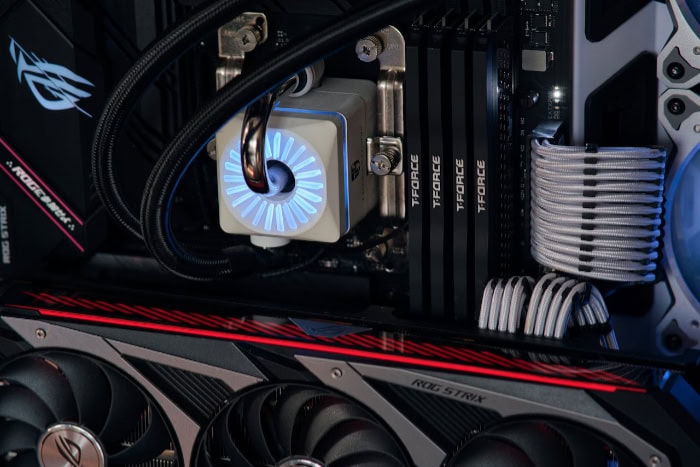
When building a PC or upgrading components, it’s essential to consider the power efficiency and thermal characteristics of the processor. These factors can significantly impact the overall system performance, stability, and longevity.
AMD Ryzen 7 and Intel Core i7 processors have different power requirements and thermal profiles, which can influence the choice of cooling solutions and power supply units.
TDP and Real-World Loads
Thermal Design Power (TDP) is a measure of the maximum amount of heat a processor is expected to generate under typical workloads. It serves as a guideline for selecting an appropriate cooling solution.
AMD Ryzen 7 processors generally have lower TDP ratings compared to their Intel Core i7 counterparts. For example, the Ryzen 7 5800X has a TDP of 105W, while the Intel Core i7-11700K has a TDP of 125W.
However, TDP doesn’t tell the whole story about power consumption. In real-world scenarios, the actual power draw can vary significantly based on the workload and the processor’s boost behavior.
AMD Ryzen 7 processors are known for their efficient power management, with features like Precision Boost 2 and Precision Boost Overdrive that dynamically adjust clock speeds and power consumption based on the workload and available thermal headroom.
Intel Core i7 processors also have their own power management technologies, such as Intel Turbo Boost and Intel Speed Shift. These features allow the processor to dynamically increase clock speeds when needed, but they can also result in higher power consumption and heat generation under heavy loads.
Heat Generation and Cooling Solutions
The heat generated by a processor is directly related to its power consumption. AMD Ryzen 7 processors, with their generally lower TDP ratings and efficient power management, tend to produce less heat compared to their Intel counterparts.
This can be advantageous for users who want to build a quiet and efficient system, as it may allow for the use of more compact and less expensive cooling solutions.
Intel Core i7 processors, particularly the high-end models with unlocked multipliers (denoted by a “K” suffix), can generate significant amounts of heat under heavy loads. These processors often require more robust cooling solutions, such as high-performance air coolers or all-in-one liquid coolers, to maintain optimal performance and stability.
It’s worth noting that the specific cooling requirements can vary depending on factors such as the processor model, clock speeds, and the user’s intended workload. Some users may opt for more powerful cooling solutions to achieve better overclocking results or to ensure optimal performance under sustained heavy loads.
Balancing Power and Performance
Performance per watt is a metric that evaluates a processor’s efficiency by considering its performance output relative to its power consumption.
In recent years, AMD Ryzen 7 processors have made significant strides in terms of performance per watt, thanks to their advanced architecture and efficient manufacturing processes.
Intel Core i7 processors have also improved their efficiency over time, but they generally lag behind their Ryzen 7 counterparts in this regard. This is particularly evident in multi-threaded workloads, where Ryzen 7 processors can deliver similar or better performance than Core i7 CPUs while consuming less power.
Conclusion
AMD Ryzen 7 and Intel Core i7 processors are both formidable choices for users seeking high-performance computing solutions. While they share similarities in their target market and general capabilities, distinct differences set them apart.
Ryzen 7 CPUs excel in multi-threaded workloads, offering excellent value for money and power efficiency. On the other hand, Core i7 processors deliver strong single-core performance and have a proven track record in gaming and productivity tasks.
Comparing these processor families involves evaluating various factors, such as performance benchmarks, technical specifications, compatibility, and thermal considerations.
Ultimately, the choice between AMD Ryzen 7 and Intel Core i7 depends on individual requirements, budget constraints, and intended use cases.
Content creators and professionals who rely heavily on multi-threaded applications may find Ryzen 7 processors more appealing, while gamers and users who prioritize single-core performance may lean towards Core i7 CPUs.
Regardless of the choice, both AMD Ryzen 7 and Intel Core i7 processors offer a compelling combination of performance, features, and value.


